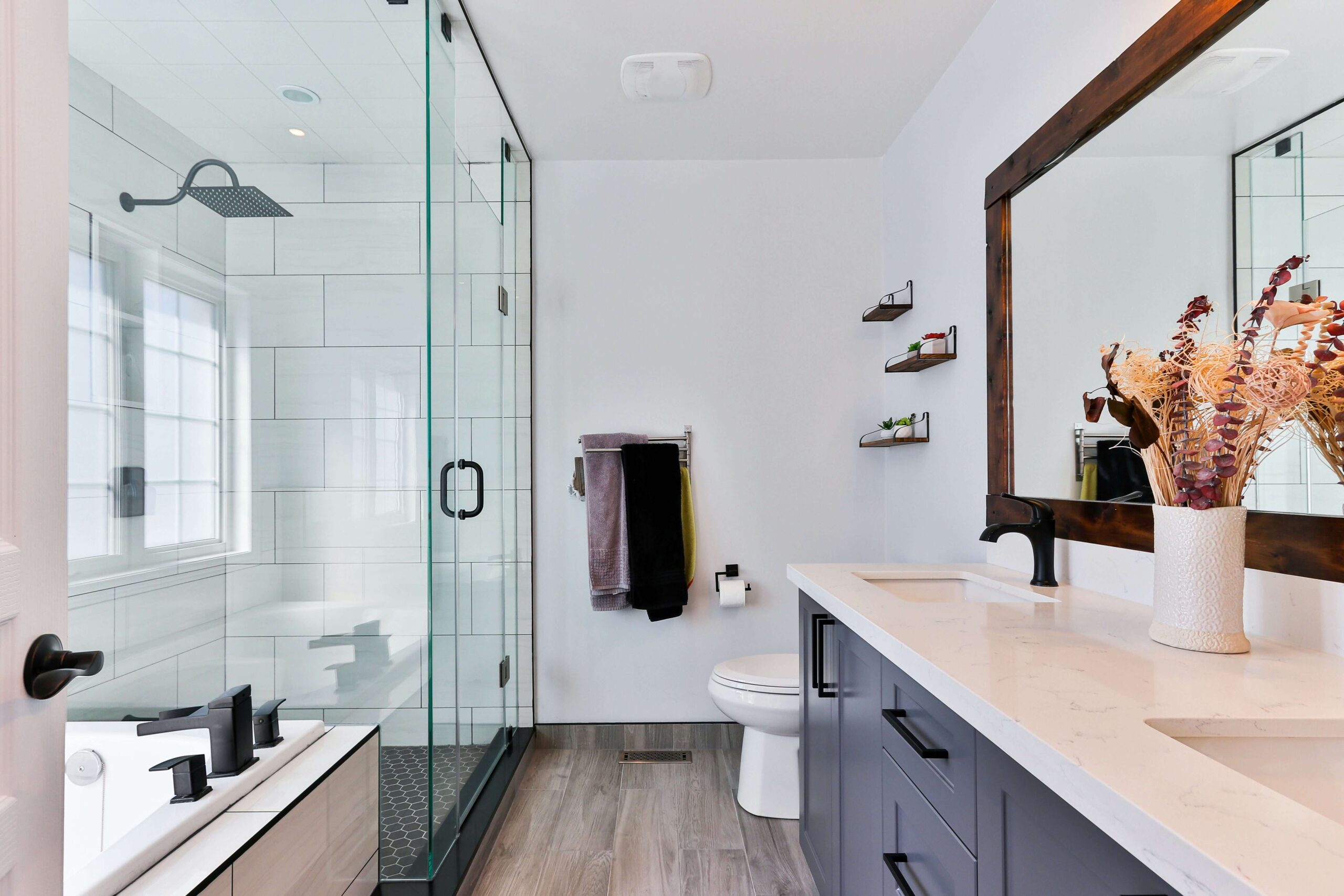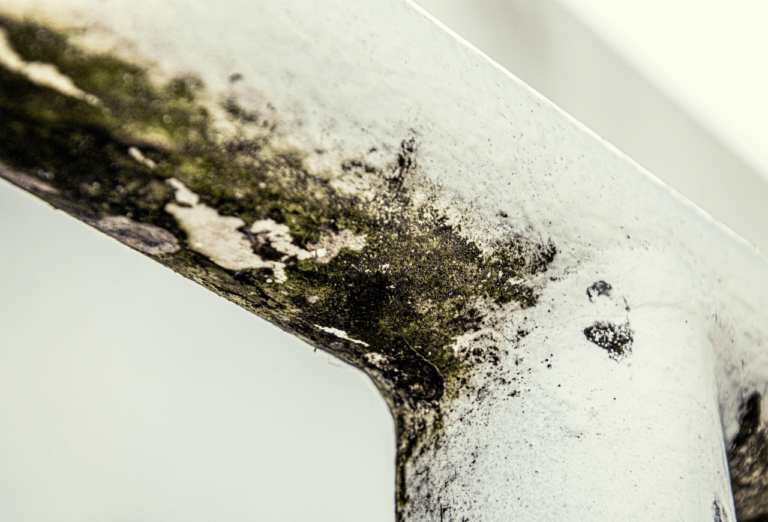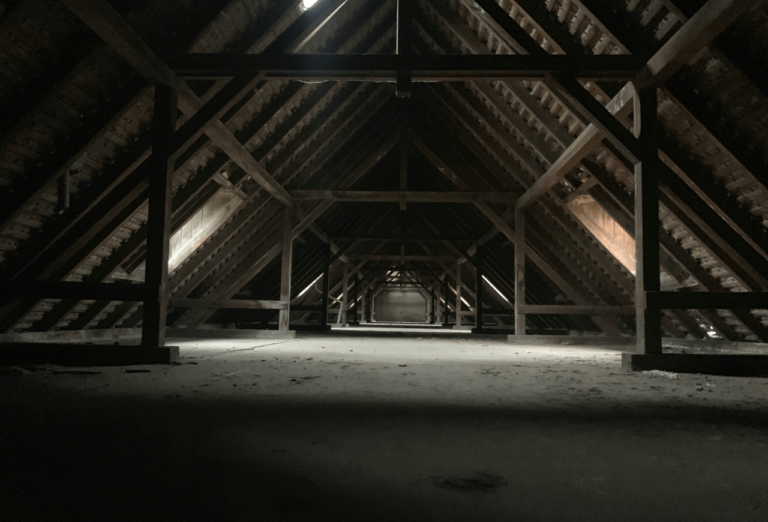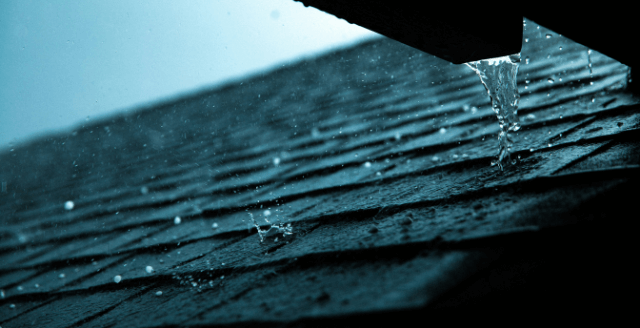Redesigning a bathroom is a journey that combines imagination, strategy, and utility. Whether you’re designing a large master bath or a small powder room, there are many steps involved in getting the bathroom of your dreams. This bathroom redesign checklist will walk you through every step of the renovation process.
Set Priorities and Expectations
Think about your priorities and goals. Is your goal to create a tranquil, spa-like space, or are you more interested in making your space utilitarian with a new layout and greater storage? Other common goals include adding energy-efficient features or improving bathroom accessibility.
It’s also important to establish a reasonable schedule and create a deadline for each stage of the project. Full bathroom remodels can last between three and eight weeks, but be prepared for unforeseen circumstances, all too common when renovating a home. Your priorities and expectations will also influence the materials you choose, the amount of money you have to spend, and whether you need to hire a professional to create your new bathroom.
Here’s a bathroom remodel checklist to make your planning:
- Bathtub or shower area changes
- Adding or removing a shower pan
- Shower door or curtain
- Changing the floor plan (Adding or removing walls, moving the elements)
- Changing or resealing the flooring
- Improving the walls (Tiles, paint, updating the grout)
- Heating improvements
- Lighting fixtures
- Faucets, valves, drains, plumbing
- Getting a new vanity
- Cabinets and storage space
- Updating countertops
- Sink and faucet
- Accessibility (grab bars, handheld shower heads, other changes)
- Mirrors and decor
- Towel dryers
- Installing or changing the exhaust fan
Set a Remodel Budget
A fundamental first step that should come before gathering ideas, placing material orders, or employing contractors is creating a reasonable budget. It helps you ensure your remodeling goals are within your reach.
Determine how much you are willing to spend on this project. Consider the renovation’s long-term worth, particularly if you intend to raise your home’s selling value. Using our list from above, you can help yourself anticipate any additional costs that might pop up.
Your budget should include all components of the redesign. Remember to allocate a contingency reserve, usually equal to 10–20% of the total budget, for unforeseen costs that frequently occur during bathroom renovation. Home and bathroom remodeling websites provide information about the price of different materials, window treatments, and bathroom fixtures and fittings, which helps with more precise budgeting.
Collect Design Ideas
One of the most important steps in a bathroom remodel project is determining the design, style, and atmosphere you want to achieve. This stage determines the overall feeling of your project and impacts every decision you make, from towels to the bathtub:
- Discover different styles – Begin with Pinterest and Instagram, as well as magazines and websites devoted to house renovation and interior design. Observe various bathroom remodel designs, such as minimalist, modern, rustic, or historical. Each has distinctive qualities that may appeal to you.
- Think about functionality – While aesthetics are important, remember to consider functionality. Your bathroom’s design should be influenced by how you use it. A freestanding tub, for instance, can be the focal point if you like to take long baths.
- Make a mood board – Gather your best ideas to create a mood board. This could be a physical board or a digital collection. Include layouts, fixtures, colors, and patterns. Throughout the remodeling process, a mood board will act as a guide and help with visualization of the finished project.
- Go to showrooms –Try to make time to stop by showrooms for bathrooms. This gives you the chance to feel various fixtures, view and touch materials, and get inspired.
- Refer to the design resources – Use websites and blogs devoted to design to gain more insight into bathroom trends and advice. They can offer insightful advice on how to create a bathroom that flows.
- Draw your ideas – If you feel like it, make a layout of your bathroom. Add the main fixtures, such as the vanity, mirror, toilet, shower, sink, and bathtub. This can aid in envisioning the room even if it isn’t initially to scale, and when the time comes to install everything, there will be no confusion.
- Be open to change – Keep an open mind about how your ideas change as you gather suggestions. The best designs are frequently the outcome of a continuous process that combines different inspirations with pragmatic needs.
Decide If You’ll Hire a Contractor or DIY
Whether to DIY or hire a professional contractor is one of the most important decisions you will make when remodeling your bathroom. This choice depends on several variables, such as your degree of expertise, the intricacy of the renovation, and your free time. Still, it is never a one-person job.
Simpler tasks like painting or installing basic fixtures can be enjoyable and affordable DIY projects. They can be customized to your exact specifications and provide a feeling of personal achievement. However, complex plumbing, electrical, and structural work associated with a full bathroom remodel needs specialized knowledge.
When it comes to tasks that are beyond your ability to do yourself or if you want to tackle a big remodel project, working with a qualified contractor like PacWest Restoration is essential. PacWest Restoration can guarantee that every part of your bathroom remodel is handled with accuracy and care, from concept to execution, thanks to their experience in remodeling, particularly in older homes. You can get in touch with PacWest Restoration at:
- Website: PacWest Restoration
- Email: info@pacwestrestoration.com
- Phone: +1 503-746-6545 | CCB#178343
- Address: 7409 SW Tech Center Dr, Suite 150, Tigard, OR 97223
Gather Permits
Obtaining the required permissions for a bathroom makeover is a sometimes neglected but important step in the process. Obtaining a permit guarantees that your remodeling project conforms to all applicable safety and building codes in the area. A seamless and lawful renovation process depends on getting the right permits, despite the fact that it may appear like an administrative burden.
Depending on how extensive your remodel is, different types of licenses may be needed. Permits are normally required for significant modifications including structural, plumbing, or electrical construction. Even for smaller tasks, it’s a good idea to inquire about the particular regulations in your area by contacting your local building department.
A general contractor can handle the permit application process on your behalf. Skilled contractors are aware of the area’s rules and can ensure that the required paperwork is submitted and approved. This saves you time and work and gives you peace of mind that your remodel is compliant with all applicable laws.
Order Materials and Bathroom Fixtures
Choosing and placing your bathroom fixtures, furniture, and material orders is a crucial stage in remodeling your bathroom. Decide on your color scheme and bathroom remodel design theme first. Your selections for things like tile floor, shower door, paint, countertops, and cabinets will be influenced by this choice.
Think about both style and utility when choosing fixtures. Search for fittings that satisfy your comfort and usage requirements in addition to complementing your design concept, such as grab bars that ensure your safety. For example, a dual-flush toilet might improve water economy, and a rainfall showerhead might add a little luxury.
When choosing storage space and new cabinets, strike a balance between functionality and style. Examine the available space and determine how to make the most of the smallest rooms. For example, wall-mounted cabinets can save room on the floor while still offering lots of storage.
Ordering well in advance is crucial in order to factor in delivery periods as well as possible delays or backorders, which are typical in restoration projects.
Extra Tips About a Bathroom Remodel Project
There is considerably more to remodeling a bathroom than just making the obvious adjustments and choices. The minor details, which are often invisible at first, have a big impact on the functionality and success of your project. Every detail matters, from the first stages of deconstruction to the last decorating touches.
Key elements of a comprehensive remodel include knowing the ins and outs of demolition, budgeting for unforeseen costs, making sure plumbing and electrical systems are up to date, selecting the appropriate cabinets and storage options, picking flooring and finishes that complement your design vision, adding personalized decor, and installing lighting fixtures that improve functionality and ambiance.
Unexpected Expenses
Common unexpected expenses for a bathroom remodel include labor, plumbing, and electrical expenses (especially if you’re creating a new floor plan), as well as any custom designs, from cabinetry to tile patterns. Finally, homeowners often spend more than expected on decor.
- Put aside 10–20% of your overall spending plan for unforeseen expenses.
- Review the budget throughout the project.
- Before you begin, have an expert check for any concealed problems.
Demolition
Full demolition can take up to two days, while partial demolition lasts shorter. However, you may find plumbing or water damage issues you want to tackle during this stage. There is an additional cost homeowners often forget, and that is refuse disposal.
- Put on protective clothing, such as goggles and gloves.
- Verify that the utilities gas, water, and electricity are off.
- Take fixtures and tiles apart methodically so they can be disposed of.
Plumbing and Electrical
Make sure to only work with licensed contractors to ensure your safety and that the work is done correctly and up to code. Consider how you use the outlets in your bathroom and if you need any changes to them.
- Assess the current plumbing and electrical systems.
- For assessments, contact a competent electrician and plumber.
- Provide additional outlets and more contemporary, effective systems.
Tiles and Finishing
Installing tiles or changing the grout in your bathroom is crucial to protecting it from water damage. While you can do it yourself, mistakes take a lot of time and effort to fix, and they are difficult to change once the tile is fixed to the wall.
- For long-lasting results, go with water-resistant tiles.
- Align tiles with the color palette of the bathroom as a whole.
- Make sure that qualified experts install things correctly.
Cabinets and Storage
Depending on your budget and spare time, you can refinish, reface, or replace your cabinets and storage. The first option is the cheapest one, while the third costs the most, especially if you need custom cabinets built to fit the space.
- Measure cabinet and storage space. Determine the amount of space that can be used for cabinets.
- Pick designs that work well and complement the layout of the bathroom.
- Choose sturdy materials appropriate for bathroom settings.
Decor
Decor can be more expensive than it seems once it all adds up. Another option is to check out thrift stores or online marketplaces for unique, eye-catching decor that set your bathroom apart from others.
- Choose decor that complements the theme of the bathroom.
- Choose ornamental objects with a functional purpose while designing your space.
- Pick bathroom decor that keeps things uncluttered.
Lighting
Bathroom lighting should have several options for different purposes, from bright, properly angled lights for applying makeup to smaller lights that help you relax in the evening. Consider different color, placement, and automation options.
- Consider ambient, task, and accent lighting when using a tiered approach to lighting.
- Opt for lighting options that use less energy.
- Install dimmers to change the lighting and improve your mood.
Every item on the checklist is intended to guarantee a careful and comprehensive approach to every stage of the bathroom renovation. You can accomplish a good, well-planned remodeling by sticking to these particular procedures.




